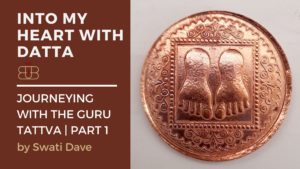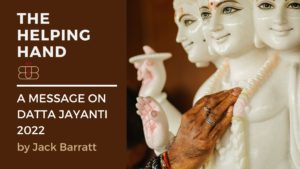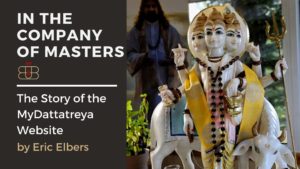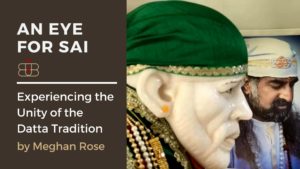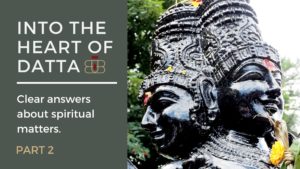Overview and Significance
MYSTERIOUS AND IMMORTAL MASTER – INCARNATION OF DIVINITY
Many have heard about Babaji, the immortal Christ-like saint of the Himalayas. Aged over several thousand years but ever-youthful, he is a great server and savior of humanity. He is known to have every power, travels by mere thought, manifests anything needed from the air, and still stays in his physical body agelessly like a twenty-year-old youth guiding matured, aged sadhus, sannyasins, and seers seated around the great Master!
Babaji is known by many names that exemplify the deep reverence people hold for him: Mahamuni [Great Saint], Tryambaka Baba [Immortal Father], Mahayogi [Great Yogi], Shiva Baba [Auspicious Father], and most commonly, by the name, Mahavatar Babaji [Revered Father – Great Incarnation], by which Paramahamsa Yogananda referred to him in the spiritual classic, Autobiography of a Yogi.
The Upanishads have minutely classified every stage of spiritual advancement. A Siddha (perfected being) has progressed from the state of a jivanmukta (‘freed while living’) to that of a paramukta (supremely free – full power over death); the latter has completely escaped from the clutches of maya and its reincarnational round. The paramukta, therefore, seldom returns to a physical body; if he does return, he is an Avatar, a divinely appointed medium of supernal blessing, on the world. An Avatar is not subject to the universal economy; his pure body, visible as a light image, is free from any debt to Nature.
Such an Avatar is Babaji Nagaraj, sage, and Himalayan seer spreading the message of unconditional universal love and the works of the Yoga Siddhas. Babaji is the torchbearer of Kriya Yoga, Yoga of Liberation, in the world. Babaji’s mission in India has been to assist prophets in carrying out their special dispensations. He thus qualifies for the spiritual classification Mahavatar (Great Avatar). Babaji has stated that he gave Kriya Yoga initiation to Sankara and Kabir, the famous medieval potter, poet, and spiritual master. Lahiri Mahasaya, instructed by Babaji, was the revivalist of the lost Kriya art in the 19th century. Babaji was very much present besides the manger when Christ took birth.
Mahavatar Babaji’s spiritual state is beyond human comprehension. The dwarfed vision of a man cannot pierce into his transcendental star. One would attempt in vain even to picture the Avatar’s attainment. It is inconceivable. However, if one can meditate upon the adorable effulgence of the glowing immortal Great Master, Babaji will illumine his intellect and whole life. By just repeating Babaji’s name with reverence, one receives His spiritual blessings.
Babaji’s spiritual work involves helping living saints and sages carry out their missions on earth, primarily through guiding spiritual aspirants on the path toward God-realisation. While he remains in the privacy and sanctity of remote forests and caves in the Himalayan mountains, he keeps a watchful eye on earnest seekers and helps guide them to the ultimate goal. His mission is to help humanity gradually realise God, and through the resulting vision of universal love, transform the world. Where there is love, there is Babaji. By learning to communicate with Babaji, anyone can bring about a transformation in their life and circle of influence.
His yogic powers are beyond comprehension, and many stories are told of his miracles. Paramhamsa Yogananda speaks of the unequaled stature of Mahavatar Babaji in his famous Autobiography of a Yogi and has greatly contributed to the fame of this peerless Master. It is said that he is many centuries old at the very least, perhaps even thousands of years old. M. Govindan places his birth in the sixth century B.C. Having realised his supreme essence [Sorubha Samadhi], he is not bound by time and space. He rarely eats, taking fruit or milk only on special occasions with his disciples.
Mahavatar Babaji is often described as having a beautiful, young body, no more than twenty years old in appearance, with a divine luminosity or self-effulgence that radiates from him. He is shrouded in mystery and has been known to change his form at will, appearing in different ways to different disciples. He has often appeared instantaneously in a room without entering it visibly, in spite of locked doors and windows. His vanishing departures have been as mysterious as his arrivals.
Yet, as spectacular as these events are, the great saint cares nothing for publicity. He often instructs confidentiality from those he visits, always staying out of the public eye but influencing humanity’s spiritual evolution from behind the scenes.
Brahmarishi Mohanji on Babaji:
‘Babaji is beyond any intellectual understanding. He is beyond words and thoughts. He is beyond all kinds of spiritual theories and experiences. Any form or picture that is attributed to His image falls short of His stature. He represents the formless. But he assumes the form that is in your mind whenever he chooses to convey a message, just to let you know who is talking. A formless Master can choose any form, as long as it is necessary. The human mind, addicted to form, cannot be satisfied until a convincing form is attached to a message. Otherwise, even if the message is truly relevant to the receiver, it is discarded as data or a message born out of a suspicious origin. In order to satisfy this need, Babaji has appeared in forms understandable to the receiver, while in fact, He remains formless. There are many in this world who have had direct experiences from this intergalactic Master. Each one’s experience could be unique and different. This is quite natural because each one has different levels of evolution, eligibility, and different levels of understanding. Hence, comparisons have no value.
Babaji is just a name to call a phenomenon. He is not a man or just a Guru. He is representing the God Almighty in all His subtlety. Words cannot explain Him. Babaji does not exist in a body – he exists in everybody. He is nameless, genderless, formless, and yet exists everywhere. Moreover, he assumes a body, which the other can identify when he needs to interact with someone and discards it as soon as he is done with his temporary requirement. Just like we wear special clothes when we go out to meet people, he wears a body when he needs to interact.’

Life History
Babaji’s Birth
He is supposed to have been born on November 30th, 203 AD, in a small coastal village known as Parangipettai in Tamil Nadu. He was given the name of Nagaraja or the ‘Serpent King.’ This is a common name in Tamil Nadu, but it could also be a portent of his future prowess in mastering the ‘kundalini shakti’, which is referred to as the ‘serpent power.’ He was a most unusual boy and was obviously an adept in the practice of Kundalini Yoga from a previous life. His father was the priest of the temple of Muruga or Karthikeya, next to their house. He obviously prayed to Karthikeya to be born as his son. In answer to his prayers, the Lord took birth as his son, Nagaraja. Karthikeya is the eldest son of Lord Shiva. He is worshipped under many names – Muruga, Subramanya, Shanmuga, Skanda, etc. His temples are found more in the South of India than in the North.
Babaji’s Birth Place
Parangipettai is situated seven kilometers from Chidambaram, one of the greatest pilgrimage centres of Southern India, which has Akash as the Tatva / primordial element. Chidambaram derives the name Chit Ambaram, which literally means the sky permeated with an atmosphere of intelligence and wisdom. Lord Nataraja is supposed to have emerged from the sacred space, ether, and performed his cosmic dance before his two devotees, Vyaghrapada and Patanjali. This is the place where great Siddhar Thirumoolar attained ‘Soruba Samadhi’ (attaining a state of deathlessness while still being alive in the body) thousands of years ago. Chidambaram has thus become surcharged with the spiritual vibrations of this experience to millions of devout pilgrims from those times. Needless to say that Nagaraj’s pilgrimages to Chidambaram along with his parents added a new impetus to his spiritual growth.
Once when Nagaraj was a young lad of four or five years, his mother procured a jackfruit and left it in the care of Nagaraj. It was Nagaraj’s favourite fruit. When she left the house on some errand, Nagaraj relished and ate the whole fruit. On her return, his mother noticed that the entire jackfruit had been eaten. She flew into a blind rage and stuffed a cloth down Nagaraj’s mouth, almost suffocating him and killing him. Nagaraj, though a young lad, forgave his mother and thanked God for showing him that she was to be loved unconditionally without attachment or illusion.
Babaji’s Childhood, Separation from his Family and Wandering
When Nagaraj was over five years old, he was standing near the Shiva temple watching the crowd gathered for a religious ceremony. A foreigner rogue from Baluchistan suddenly seized the child and carried him off. Seeing the potential of the child for sale as a slave due to the handsome features of the young boy, he took Nagaraj in a sailboat northwards by sea for more than a thousand miles. They reached a port, which could be the modern Kolkata. There he was sold to a wealthy man. The man who purchased Babaji, being kind-hearted, freed him soon after that. Thus Babaji Nagaraj was set free from the duties and limitations of a householder. He never returned home.
Like many sannyasins and renunciates, Nagaraj became a wandering Sadhu by joining a small group of wandering sannyasins. He studied the sacred scriptures of India, such as the Vedas, the Upanishads, the epics Mahabharatha, the Ramayana, and the Bhagavad Gita. Soon he grew as a scholar, and his reputation reached far and wide. He was often invited to debate with other pundits (scholars) and leaders belonging to various metaphysical schools of thought. The young Nagaraj could clarify points and resolve disputes with such erudition that astonished everyone.
Nagaraj was conscious that his erudition did not take him anywhere closer to self-realisation. His dissatisfaction grew by the day, and as the days passed, he understood that a permanent change in consciousness was required to bring complete fulfillment. He was thirsty to get enlightened. But alas, he had no Guru or any method to help him reach his goal.
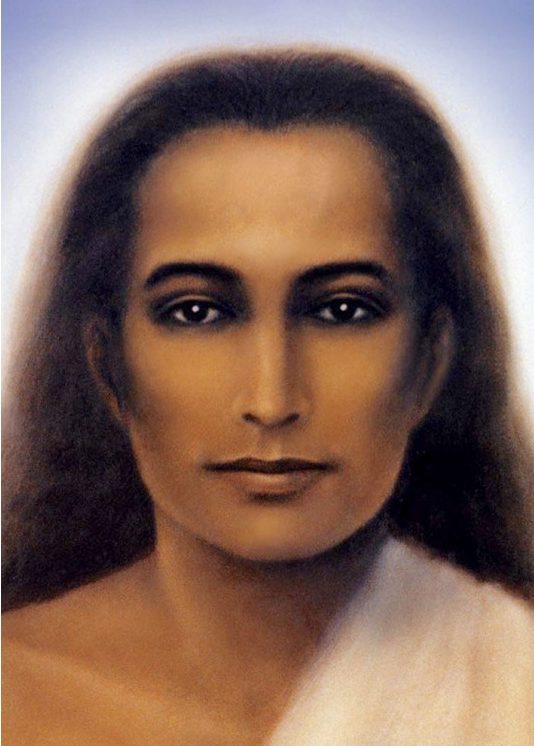
Tradition and Gurus
BABAJI BECOMES SIDDHA BOGANATHAR’S DISCIPLE
The famous sacred temple at Kataragama in the southernmost tip of Sri Lanka is the Shanmuga shrine, which is a most revered place of worship for Hindus and Buddhists, and of late, to Muslims. Centuries ago, Gautama Buddha took a long pilgrimage to the aforementioned shrine. This temple established by Siddhar Boganathar contains no carved image of God. Siddhar Boganathar had only installed a Mystic-Yantra (Geometrical symbol) engraved into a gold plate, representing within its form and mantra syllables, a crystallization of great deity Shanmuga. He also imparted the mystic power of this Yantra for the benefit of all those who seek the blessings of Lord Shanmuga. Down through the centuries, Kataragama has been the scene of miracles to millions. The Kataragama shrine is deep inside the forest, beside the river Manika Ganga. For a very long time, Saints, Sages, and Siddhas of yore practiced severe austerities, and one can imagine how the place would be filled with their vibrations.
Babaji Nagaraj met the Great Siddhar Boganathar and became his disciple. Boganathar was the grandson of the famous immortal Siddhar Thirumoolar. After initiation from Boganathar, Nagaraj performed intensive yoga sadhanas, particularly various ‘dhyana kriyas’ under Siddhar Boganathar’s guidance. The penance was done for an extended period without a break and gradually intensified. On looking at the devotion and dedication at which Babaji Nagaraj performed the penance, Siddhar Boganathar also further initiated his sincere disciple into more advanced kriyas. His consciousness expanded, and Babaji Nagaraj realised the divinity within him. His consciousness merged in the cosmic spirit. The Samadhi experiences gradually deepened over the months and climaxed with a vision of Lord Kumaraswamy or Shanmuga. Babaji realised that he was incarnating the consciousness of Lord Shanmuga. Under Boganathar’s guidance, Babaji delved into the mysteries of the ten systems of Sanatana philosophy to understand and appreciate the full significance of Siddhanta (philosophy) of the Siddhas.
Siddhar Bhoganathar, Guru of Babaji
Siddha Bhoganathar is considered to be the Guru of Babaji. His Samadhi is in Palani, Tamil Nadu. He is immortal, just like His famous disciple. Siddha Bhoganathar and His disciples are still supposed to be meditating inside the caves of the hills of Palani. It is also believed that Bhoganathar created the idol of Lord Muruga, the presiding deity of Palani Hill.
When Sage Bhoganathar wanted to make the idol of Lord Murugan in the temple of Palani, Babaji was his model. Lord Murugan is also called Kumara. He arrested his growth at sixteen. Bhoganathar combined nine poisons (Nava Paashaan) in a particular order and created the idol of Lord Murugan in the likeness of Babaji because he is the Avatar. No other model was needed to create Murugan. Though individually they were nine powerful poisons, they were mixed together in such a way to cure every disease – all diseases. This is called Siddha Oushadh (Siddha Medicine).
Even now, if one visits the temple of Palani, abhisheka is done. Milk is poured over the idol and given to the visitor. It is supposed to take away all the toxins from the system.
Babaji and Sage Agasthya
Babaji was inspired by Sage Bhoganathar’s advice to seek out the powerful sage and Sage Agasthya for further initiation into Kriya Kundalini Pranayama. Sage Agasthya was at Courtrallam in the Pothigai hills of Tamil Nadu.
Babaji moved to Courtrallam on foot and, on arriving there, resolved to remain there until Sage Agasthya initiated him into the secrets of yoga. Babaji adopted a suitable asana and began to pray for the appearance of the great Sage. He was fed at times by the pilgrims. He never left the place, despite the forces of nature like rain, shine, dust, insect bites, etc. He prayed with great fervor and patience by surrendering his life to God. On the 48th day, when he was whiskers away from complete collapse, he fervently repeated Sage Agasthya’s name. No sooner the message reached the Sage telepathically than he was by his disciple’s side immediately. Babaji Nagaraj’s love and fervor melted the heart of the Siddha. Sage Agasthya embraced Nagaraj, fed him, and later imitated him into Kriya Kundalini Pranayama or ‘Vasi Yoga.’
Babaji in the Himalayas
Sage Agasthya, after giving due emphasis to the strict conditions under which the pranayama was to be practised, and considering its potential for awakening the higher levels of consciousness, enlightenment, and the ultimate transformation of the Pancha Koshas, directed Babaji to go to Badrinath in the upper ranges of the Himalayas.
Badrinath is in the Himalayan Mountains at the height of 10,243’ above Mean Sea Level, a few miles south of the border of present Tibet. It lies at the confluence of the Rishi Ganga and Alaknanda Rivers. Heavy snowing at about mid-October causes people to move out of Badrinath. Only the most courageous yogis can then still live in Badrinath. The place is sanctified by the presence of the hermitages of many sages, Rishis, Yogis, and Siddhas as well as a temple dedicated to Sri Badrinarayan or Lord Vishnu.
Adi Shankara re-enshrined the image of Lord Vishnu, which lay asleep in the Narad Kund Lake. Pilgrimages are undertaken to Badrinath to overcome evil karmas and attain Moksha (liberation) from the cycle of births and deaths.
As per the directions of Agasthya, Babaji moved to Badrinath and spent 18 months practising intensively all the Kriya yoga techniques taught to him by his gurus Sage Boganathar and Sage Agasthya. After eighteen months of rigorous yoga Sadhana, Babaji entered the state of Soruba Samadhi, wherein the Absolute Divinity descended, merged with, and transformed the spiritual, intellectual, mental, vital, and physical bodies. From then on, Babaji’s physical body ceased to age and sparkled with a golden luster of divine incorruptibility.
The yogic techniques he had been taught allowed him to become a true Siddha – a perfected soul who has mastered both his body and the elements and has merged into the infinite, supreme power that resides in him as well as the universe. Thus, he came to be known as Baba Brahmananda.
Babaji had many great disciples: Adi Shankaracharya [788-820 AD], Kabir [1407-1518 AD], and Lahiri Mahasaya [1828-1895]. The last one is probably the best known to most people since he plays an essential role in the famous book, ‘The Autobiography of a Yogi,’ by Paramahamsa Yogananda. In 1861, Babaji taught Lahiri Mahasaya the powerful series of yogic techniques known as ‘Kriya Yoga.’ This event signifies the birth of Kriya Yoga in the current age. It occurred in the cave now known as Babaji’s cave, near Dwarahat in the Kumaon district of Uttarakhand.
Lahiri Mahasaya later taught the technique to his disciple Yukteswara who taught it to Paramahamsa Yogananda, who mentions in his book that Babaji gave him the instruction to go to the West and teach the technique in the western world.
Source: Babaji and the 18 Siddha traditions by M. Govindan
Vanamali Mataji describes her experience with Babaji:
‘Recently I was inspired to make a visit to Babaji’s cave near Dwarahat. It was indeed a unique experience. We had already done one climb to the temple of Dunagiri Devi, so the next climb to the cave was a great effort for me. Babaji’s cave is kept under lock and key by the Yogoda society. They open it only from 11 am to 2 pm. It was well past one by the time we reached the cave, so there was very little time to sit and meditate.
The previous day we had gone to a small Shirdi Sai Baba mandir in Dwarahat. We sat in front of the idol and started to meditate. There was a photo of Babaji right behind the statue of Sai Baba. To my surprise, I found that the image of Babaji turned into the beautiful form of Lord Subramanya holding the vel (spear) in his hand with a peacock standing beside him. He had long flowing locks up to his shoulders and wore a loincloth exactly like Babaji. His piercing eyes looked straight at me, and he said, ‘You have been worshipping me for many years. That is why I am giving you this vision. Don’t you know that Babaji, who you have come here to see, is my Avatara (incarnation)?’
With these words, the vision disappeared to be replaced by Babaji’s photo. I opened my eyes, and everything was as it was before. The whole scene had taken place within five minutes. Immediately I realised that I had been taken to Kataragama with a specific purpose – to show me that Babaji was indeed Lord Karthikeya = Lord Subramanya. That was why Siddhar Bhogarnatha had taken him to Kataragama to initiate him. Of course, being the incarnation of Lord Subramanya, he needed no initiation, but all Avatars go through such mundane activities. Having taken on a human body, they have to behave like human beings.
Source: Mahavatar Babaji by Vanamali Mataji
Mohanji speaking on Babaji and the various traditions:
‘Babaji is in every Tradition. You would not see one Tradition where Babaji is not. So which Tradition does Babaji belong to? Difficult to say because all the Traditions are connected. And why are there various Traditions? Because there are various types of people. Everybody cannot understand or follow every Tradition. So there are a variety of Traditions, a variety of Masters, paths, all reaching the same destination eventually.
The Nath Tradition is one of the most powerful Traditions of India. As I said earlier, there is a connection between all Traditions through the underground. Outside it all looks like different rivers, but inside it’s the same water. The Nath tradition has its origin from Lord Krishna. When Lord Krishna was leaving his body, knowing that after leaving his body, his teachings could get destroyed, he told Lord Dattatreya to codify the Nath Tradition. He asked the nine Narayanas, which are actually his own sequential parts, to come to Earth and attain the bodies of Navanath – nine Nath Gurus. And in that Tradition, Adinath is Lord Shiva, and Balaknath is Babaji.
Babaji is known as Mahatapa in the Avadhuta Tradition. In Gyanganj, Babaji is also known as Mahatapa. So we know Balaknath, Mahatapa, Lord Muruga are all one person. Different costumes or different manifestations, but it’s all the same.
Teachings
Paramahamsa Yogananda recorded an amazing promise made by Mahavatar Babaji to guide and protect all sincere kriyavans [practitioners of Kriya Yoga] in their sadhana toward God-realisation. The enormity of this promise reveals the unlimited power behind this great saint. Swami Sri Yukteswar, the guru of Yogananda, summarized it best: ‘His spiritual state is beyond human understanding.‘
The great Mahavatar’s love for humankind continues to guide the steps of his disciples, altering spiritual evolution worldwide.
Babaji Speaking on Ego
‘The ego is the barrier between man and God. Ownerships mean alienation from the eternal Truth. The fatter you become with ego, the more difficult it will be for you to enter my world. The ego should not be allowed to grow in weight and size. Service should always be selfless, without ownership. Purpose should be pure, without expectations. Grace disappears when ego appears.‘
Babaji and a galaxy of Masters work relentlessly to bring up beings of lower consciousness. But, just like our soul never imposes its presence on us, they never impose anything on anyone. Once we prepare ourselves and become eligible, they appear and deliver unconditionally. Ego is the greatest barrier to be crossed.
Great Masters like Babaji, through a Thousand Eyes, watch the progress of each Soul. Unconditional Love is their Expression.
Babaji’s Divine Teachings:
- The worldly man wants to realise God while continuing his daily life. But problems will arise for him since time is short. A simple, easy, unostentatious, and highly effective Kriya Yoga is to be taught to them.
- To renounce the world is not easy. Wherever man is, the world clings to him.
- At present, the worldly man is helpless to achieve God-realisation.
- The door of Kriya Yoga is open only to earnest seekers and sadhakas.
- The sages and saints, clad with the bark of a tree, their eyes sunk in, their skin shrunk over their bony frame, and their hair matted in locks, are the living idols of God as they move from door to door for alms.
- Among the living, man is the best creation. He chooses one of two paths: A life as a householder or a life of renunciation. Where can be found the justification for creating differences between a householder and a sannyasi?
- To serve a saint is sacred and brings great spiritual gain.
- God is in every living body.
- One should leave the place where the guru is maligned.
- Patience, ceaseless efforts, and strong determination make everything possible.
- Be fearless.
- I always keep my disciples under my guard.
Miracles
Paramahamsa Yogananda narrates two extraordinary incidents of Babaji’s life in his ‘Autobiography of a Yogi.’
Babaji and his disciples were sitting one night around a huge fire that was blazing for a sacred Vedic ceremony. Babaji suddenly seized a burning branch and lightly struck the bare shoulder of a disciple who was close to the fire. ‘Sir, how cruel!’ Lahiri Mahasaya, who was present, made his remonstrance. ‘Would you rather have seen him burned to ashes before your eyes, according to the decree of his past karma?’ With these words, Babaji placed his healing hand on the chela’s disfigured shoulder. ‘I have freed you tonight from a painful death. The karmic law has been satisfied through your slight suffering by fire.‘
On another occasion, Babaji’s sacred circle was disturbed by the arrival of a stranger. He had climbed with astonishing skill to the nearly inaccessible ledge near the Guru’s camp. ‘Sir, you must be the great Babaji.’ The man’s face was lit with inexpressible reverence. ‘For months, I have pursued a ceaseless search for you among these forbidding crags. I implore you to accept me as a disciple.’ When the great Guru made no response, the man pointed to the rock-lined chasm below the ledge. ‘If you refuse me, I will jump from this mountain. Life has no further value if I cannot win your guidance to the Divine.’ ‘Jump then’, Babaji said unemotionally, ‘I cannot accept you in your present state of development.’
The man immediately hurled himself over the cliff. Babaji instructed the shocked disciples to fetch the stranger’s body. After they had returned with the mangled form, the Master placed his hand on the dead man. Lo! He opened his eyes and prostrated himself humbly before the omnipotent guru.
‘You are now ready for discipleship.’ Babaji beamed lovingly on his resurrected chela. ‘You have courageously passed a difficult test. Death shall not touch you again; now you are one of our immortal flock.‘
Then he spoke his usual words of departure, ‘Dera danda uthao’; the whole group vanished from the mountain.

Contemporary Masters
Holy Sites and Pilgrimages
Babaji’s Ashram
Gowrishankar Peeta is Babaji’s Ashram near Badrinath in the Himalayas. The Ashram is near the temple town of Badrinath and surrounded by tall or high rock cliffs, with a row of caves by their side. The largest cave belongs to Babaji. There are two waterfalls opposite this cave in a corner. There is a small group of residents in the Ashram. They use the largest waterfall for bathing and the smaller one for drinking. Though there is no visible light source, even at night, the whole area is well lit. No one can approach the Ashram closer than a mile without Babaji’s permission or concurrence.
Babaji’s Cave
Mahavatar Babaji Cave is the Most Spiritual Cave in the Himalayan Region, which is the origin of Kriya yoga and where Yoga Guru Lahiri Mahasaya got Kriya Yoga teachings directly from Mahavatar Babaji. Every day many pilgrims and Kriya Yogis that follow different Gurus visit the cave. To understand the historical significance of the cave, devotees should read Chapter 34, ‘Materialising a Palace in the Himalayas’ from the Autobiography of a Yogi, and “A Blessing from Mahavatar Babaji” from ‘Only Love’ by Sri Sri Daya Mata.
Cave of Mahavatar Babaj
Babaji’s cave in the Dronagiri Hills, Ranikhet, is where Babaji is supposed to have met and initiated Lahiri Mahasaya into Kriya Yoga in 1861. Dwarahat is the nearest town and also the location of the Yogananda Ashram. Mahavatar Babaji’s cave area is considered the place where Babaji initiated Lahiri Mahasaya in 1861 and is, therefore, the birthplace of Kriya Yoga in this Dwapara Yuga. All the modern Kriya yogis in the world can trace their lineage to this event.
Kataragama – Babaji’s place of study
Kataragama is a divine place visited by all the great Siddhas. It is known as Dakshina Kailasa or the Kailasa of the South. Kailasa is the abode of Lord Shiva in the Himalayas. Strangely enough, these two places lie on the same line of longitude 80.10 degrees east – Kailasa in the extreme north and Kataragama in the extreme south. This line is said to refer to the Sushumna Nadi or subtle nerve that runs through the human spine. All the chakras or subtle centers of psychic energy are located along the spine. Kailasa corresponds to the Sahasrara Chakra or the thousand-petalled lotus situated over the fontanel on top of the head in the human being, while Kataragama is the Muladhara Chakra situated just above the anus in the human body. All those who wish to practice Kundalini Yoga have to enter through the Muladhara Chakra.
Even in this age of skepticism, Kataragama is an extraordinary place where strange things happen which appear to defy the laws of science. The atmosphere is filled with mystery and magic. Countless miracles keep taking place here.
Kataragama was the name of Lord Subramanya when he incarnated himself at that place. But strangely enough, there is no icon or idol of Subramanya here. His aspect as pure consciousness alone is worshipped here. The main temple has two apartments. The sanctum sanctorum contains a small casket with the shat-kona yantra, which is a mystic design with two interlocking triangles. It is heavily veiled with seven curtains. It does not have an idol of Kataragama (Subramania). Instead, it has a casket, which contains the mysterious yantra (mystic diagram), which is embossed on a golden tablet studded with gems. This is where the divine power is supposed to reside. The Lord in his Nada Bindu form (a form of letters and sound) is enshrined in the yantra.
Until very recent times, the only way to reach Kataragama was by foot. The path led through a thick equatorial jungle infested with snakes and wild animals. Only the intrepid and the faithful could make this hazardous journey and return home alive. Now, of course, the town has been connected by road to all major cities of Sri Lanka, so most people prefer the safer method of going by motor vehicle. However, even today, there are a few people who still follow this ancient trail and go on foot. The Tamil Hindus make a yearly pilgrimage from the south of Sri Lanka right up to the temple of Kataragama. They believe that the pilgrimage to Kataragama is feasible only if Lord Muruga himself issues an invitation.
At Kataragama, Nagaraja met his Guru, the great Siddha Bhogarnatha. This is why he had been led to this place. He performed intense sadhana for a long time with him. Bhoganathar conferred many powers on him, including the secret of ‘Kaya Kalpa’, or the method of preserving the body in a youthful state for thousands of years. Babaji still looks like a young boy even though he is centuries old.
Bhoganathar directed him to go to Coutrallam in Tamil Nadu, where the great sage Agasthya was living incognito. Agasthya was one of the seven sages who had been sent by Lord Shiva himself to revive the knowledge of the Sanatana Dharma in the south of India. Nagaraja went and sat with him without knowing who he was. Seeing his deep potential, Agasthya revealed himself and initiated him.
The Legend of Kukuchina Village (where Babaji’s cave is located)
Pandukholi is where the Pandavas (legendary Kings of Mahabharata Epic) sought shelter in their fourteen years of exile. Some folklores reveal that they selected this desolate and remote place for their secret exile. The Pandavas (legendary kings) were struggling to maintain their secrecy of exile. The Kauravas (their enemies) were searching to find them. The Kauravas reached close but lost their hope and went back. Now this place is famous as Kukuchina ( Kauravchina).


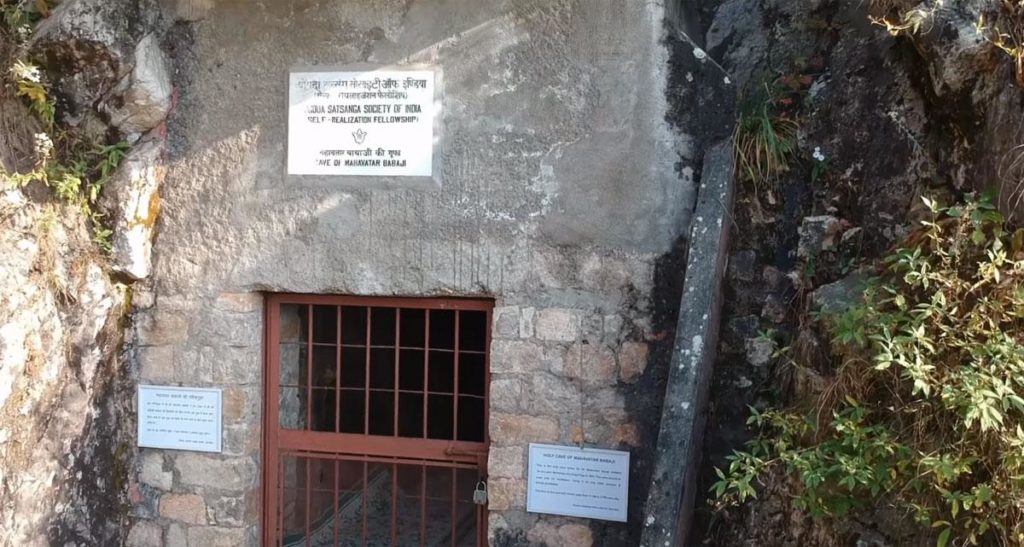
Bibliography
- Babaji and the 18 Siddha Kriya Yoga Tradition – Marshall Govindan
- Autobiography of a Yogi – Paramahansa Yogananda
- Reminiscences of the Masters – Paramahamsa Hariharananda

